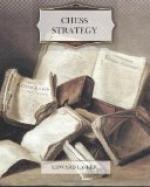Diagram 91 illustrates another mistake frequently made in the choice of an objective, and one which can utterly spoil the whole game, even in its earliest stage. Black has to
--------------------------------------- 8 | #R | | #B | #Q | #K | #B | #Kt| #R | |---------------------------------------| 7 | #P | #P | #P | #P | | #P | #P | #P | |---------------------------------------| 6 | | | | | | | | | |---------------------------------------| 5 | | | | | | | | | |---------------------------------------| 4 | | | | ^Q | ^P | | | | |---------------------------------------| 3 | | | | | | | | | |---------------------------------------| 2 | ^P | ^P | ^P | | | ^P | ^P | ^P | |---------------------------------------| 1 | ^R | ^Kt| ^B | | ^K | ^B | | ^R | --------------------------------------- A B C D E F G H
Diag. 91
move, and his game is somewhat hindered by the dominating position of the White Queen. The latter prevents the Bishop from occupying a desirable square at his QB4, and also makes the liberating move P-Q4 impossible. Therefore it would seem desirable to drive the Queen away. But this should only be done if it is not attended by some further disadvantage.
Now the average player is not particularly fastidious in his methods. The Queen irritates him, therefore the Queen must be repelled one way or the other. He would probably try P-QB4. The result is that the Queen selects another good square, for instance at K3 or QR4, but Black has not improved matters, for he still can play neither B-B4 nor P-Q4. On the other hand, irredeemable harm has been done, inasmuch as the Black QP now remains “backward.” The attack on the Queen by P-QB4 must consequently be rejected. Sallies such as these, in which short-lived attacks are made by pawns upon pieces, are always of doubtful value. They must unquestionably be avoided if they break up the pawn skeleton, which is formed in the opening, and confine the mobility of the pieces.
Also with regard to manoeuvres of pieces, intended solely to drive away an opposing piece, it is obviously essential that the attacking pieces in effecting their purpose should not be made to stray too far afield, lest they become out of play.
I shall delay dealing with the features underlying good forms of attack, both by pieces and pawns, until I have treated of the choice of an objective.
From what we have already expounded, it is clear that the subject of an attack should be incapable of evasion. Should it, in the course of attack, be desired to prevent a piece from being moved, that can only be effected by means of a “pin.” A pawn, however, can be held in place either by occupying the square immediately in front of it, or by controlling the latter with more forces than the opponent can bring to bear upon it.




